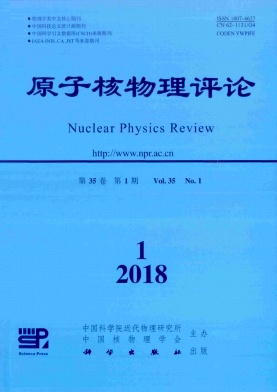|
[1]
|
WANG Junsheng, ZHANG Ying, ZHANG Lixing, et al. Chinese Journal of Computational Physics, 2003, 20(5):408. (in Chinese) (万俊生, 张颖, 张利兴. 计算物理, 2003, 20(5):408.) |
|
[2]
|
SATO T, NⅡTA K, MATSUDA N, et al. J Nucl Sci Technol, 2013, 50(9):913. |
|
[3]
|
MCKINNEY G W. Physics and Algorithm Enhancements for a Validated MNCP/X Monte Carlo Simulation Tool, Phase VⅡ[C]. DNDO/NSF ARI Grantees Conference, Leesburg, Virginia, United States, 2012:1. |
|
[4]
|
Geant4 Collaboration. Geant4 User's Guide for Application Developers, December, 2011. |
|
[5]
|
BATTISTONI G, BOEHLEN T, CERUTTI F, et al. Ann Nucl Energy, 2015, 82:10. |
|
[6]
|
ZHANG Suyalatu, LUO Fei, CHEN Zhiqiang, et al. Nuclear Physics Review, 2016, 33(3):370. (in Chinese) (张苏雅拉吐, 罗飞, 陈志强, 等. 原子核物理评论, 2016, 33(3):370.) |
|
[7]
|
FAN Sheng, YU Hongwei, SHEN Qingbiao, et al. Nuclear Physics Review, 2002, 19(4):390. (in Chinese) (樊胜, 于洪伟, 申庆彪, 等. 原子核物理评论, 2002, 19(4):390.) |
|
[8]
|
NIKHIL VITTAL SHETTY, Study of Particle Transport in a High Power Spallation Target for an Accelerator-Driven Transmutation System[O]. India:Aachen University, 2013:51. |
|
[9]
|
YIN Chenyan, LI Zhiyuan,ZHOU Chao, et al. Journal of Unicersity of South China:Science and Technology, 2010, 24(2):1. (in Chinese) (尹陈艳, 李志远, 周超, 等. 南华大学学报:自然科学版, 2010, 24(2):1.) |
|
[10]
|
LEE S C, BUNGAU C, CYWINSKI R, et al. Geant4 Simulations of Proton-Induced Spallation for Applications in ADSR Systems[C]. Proceedings of IPAC2016, Busan, Korea, 2016:1943. |
|
[11]
|
HEILBRONN L, NAKAMURA T, IWATA, et al. Overview of Secondary Neutron Production Relevant to Shielding in Space, 2005, 116(1-4):140. |
|
[12]
|
AMIAN W B, BYRD R C, CLARKET D A, et al. Nuclear Science and Engineering, 1993, 115(1):1. |
|
[13]
|
TSTSUSHI NALAMOTO, KENJI ISHIBASHI, NARUHIRO MATSUFUHI, et al. Journal of Nuclear Science and Techology, 1995, 32(9):827. |
|
[14]
|
KENJI ISHIBASHI, HIROSHI TAKADA, TATSUSHI NAKAMOTO, et al. Journal of Nuclear Science and Techology, 1997, 34(6):529. |
|
[15]
|
MEIGO S, TAKADA H, CHIBA S, et al. Nucl Instr Meth A, 1999, 432:521. |
|
[16]
|
TANG Jingyu, JING Hantao, XIA Haihong, et al. Atomic Energy Science and Technology, 2013, 47(7):1089. (in Chinese) (唐靖宇, 敬罕涛, 夏海鸿, 等. 原子能科学技术, 2013, 47(7):1089.) |
|
[17]
|
BELYKOV-BODIN V I, KATINOV Y V, NOZDTACHEV V N, et al. Nucl Instr Meth A, 2008, 596:434. |






 甘公网安备 62010202000723号
甘公网安备 62010202000723号 DownLoad:
DownLoad: